Frankfurt am Main is a vibrant metropolis full of fascinating sights and attractions. From the impressive Römer to the green Palmengarten – the city on the Main has something for everyone. In this article, we present the top 10 sights in Frankfurt that you should definitely not miss during your visit. Immerse yourself in the rich history, culture and architecture of this important German city.
1. The Römerberg – the historic heart of Frankfurt
The Römerberg is the central square in Frankfurt’s Old Town and one of the city’s most famous landmarks. Here you will find a number of impressive half-timbered houses, including the famous “Römer” town hall. The square was once the site of imperial coronations and trade fairs and is now a popular meeting place for locals and tourists alike.
What is there to see on Römerberg?
- The “Römer” town hall with its magnificent stepped gable façade
- The Alte Nikolaikirche, one of Frankfurt’s oldest churches
- The Fountain of Justice, a symbol of justice and freedom
Interesting facts about the Römer
The Römer has served as Frankfurt’s town hall since the 15th century. The coronation banquets of the newly crowned emperors of the Holy Roman Empire took place in the Imperial Hall. Today, the Römer is a popular photo motif and Frankfurt’s landmark.
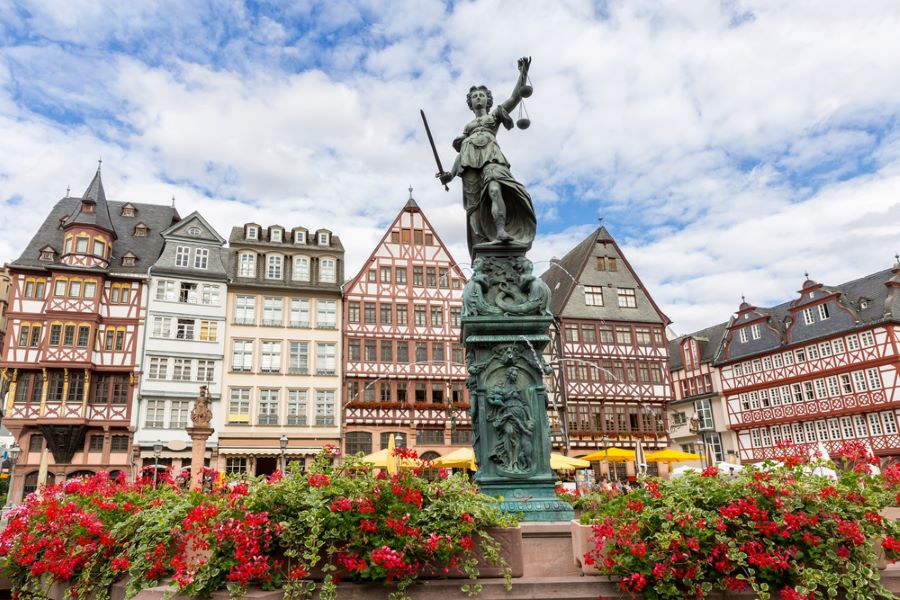
2. St. Paul’s Church – a symbol of democracy
St . Paul’s Church is not only an architectural highlight, but also of great historical significance for the whole of Germany. in 1848, the first freely elected national assembly met here and laid the foundations for German democracy. Today, St. Paul’s Church serves as a memorial and meeting place and is a symbol of freedom and democracy.
Why is St. Paul’s Church so important?
- the first German National Assembly was held here in 1848
- St. Paul’s Church is considered the cradle of German democracy
- Today it is an important memorial and meeting place
Architecture of St. Paul’s Church
St. Paul’s Church was built in the classicist round building style and impresses with its simple elegance. After its destruction in the Second World War, it was rebuilt true to the original and is now an impressive testimony to German history.
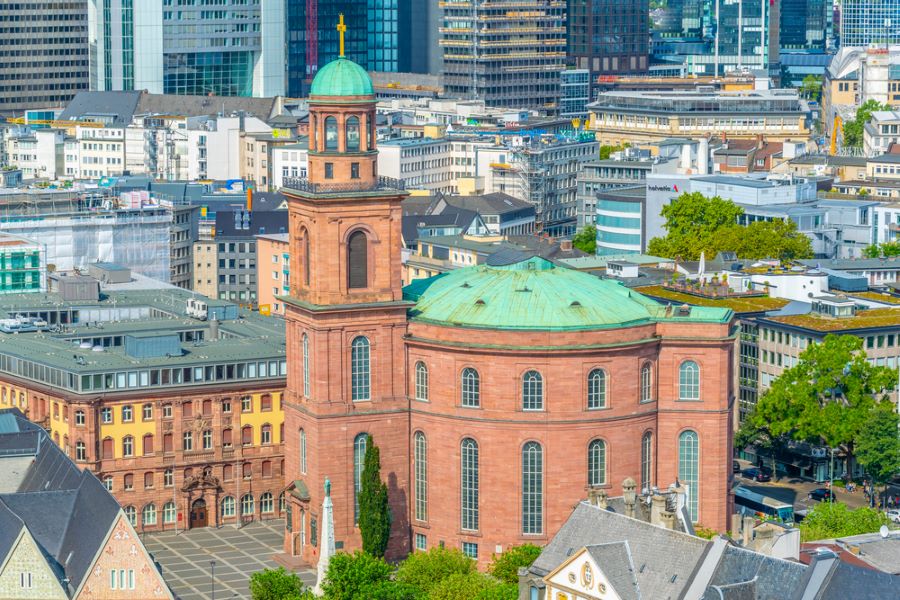
3. The Main Tower – Frankfurt’s highest vantage point
At 200 meters high, the Main Tower is one of Frankfurt’s most imposing skyscrapers and offers a breathtaking view of the city’s skyline. From the viewing platform at a height of 200 meters, you have a magnificent panoramic view of Frankfurt and the Rhine-Main region.
What awaits you in the Main Tower?
- Spectacular view over the Frankfurt skyline
- Modern architecture and impressive engineering
- Restaurant and bar for culinary flights of fancy
Facts about the Main Tower
The Main Tower was completed in 1999 and has been a landmark of the Frankfurt skyline ever since. It houses offices for various companies and the viewing platform is one of the city’s most popular attractions.
4. The Museumsufer – art and culture on the Main
The Museumsufer is a unique ensemble of 15 museums along the banks of the Main. Art and culture enthusiasts will find a wide range of exhibitions here, from antiquity to modernity. A walk along the Main with stops at the various museums is an unforgettable experience.
What museums are there on the Museumsufer?
- The Städel Museum with works from the Middle Ages to the present day
- The Liebieghaus with sculptures from antiquity to classicism
- The Museum of Applied Arts with design and arts and crafts
Tips for visiting the museum embankment
Plan enough time for your visit, as the variety of museums is overwhelming. The Museumsuferfest in August is one of the largest cultural festivals in Europe – a highlight for every visitor.
5. The Palmengarten – a green oasis in the middle of the city
The Palmengarten is one of the largest botanical gardens in Germany and a green oasis in the middle of the city. Covering an area of 22 hectares, you will find over 6,000 different plant species from all continents. A stroll through the various themed gardens and greenhouses is a relaxing nature experience.
What is there to discover in the Palm Garden?
- The impressive palm house with tropical plants
- The rose garden with over 800 different rose varieties
- The perennial garden with colorful flower beds
Events in the Palm Garden
The Palm Garden is not only a botanical highlight, but also the venue for various events such as concerts, readings and guided tours. The Palmengarten is particularly atmospheric at Christmas time, when thousands of lights transform the gardens into a sparkling sea.
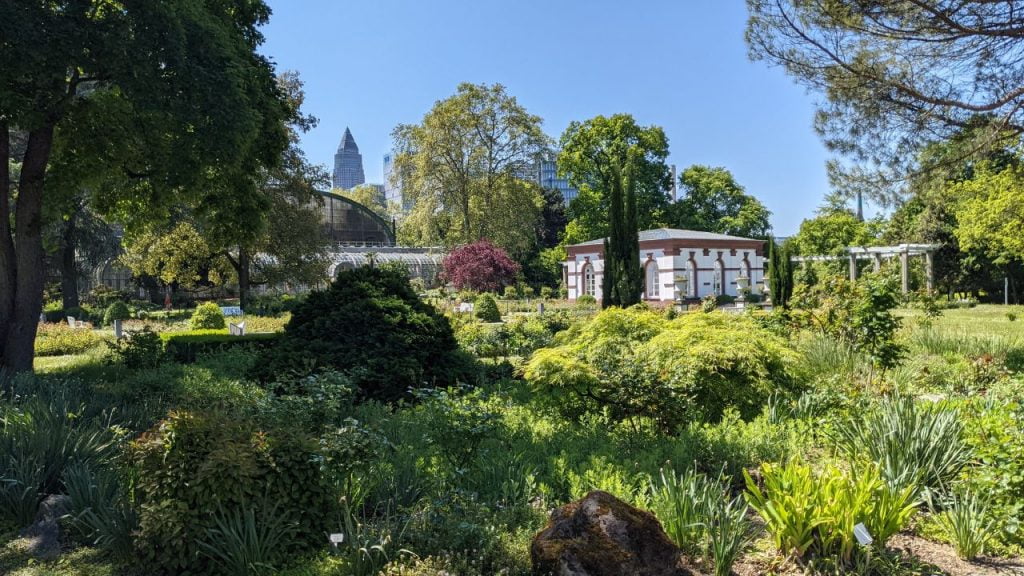
6. The imperial cathedral of St. Bartholomew – coronation church of the emperors
The imperial cathedral of St. Bartholomew is the largest and most important church in Frankfurt. From 1562 to 1792, the coronations of the Holy Roman Emperors took place here. With its Gothic style and two striking towers, the cathedral dominates Frankfurt’s old town.
What can you see in the imperial cathedral?
- The impressive high altar from the 15th century
- The election chapel, where the emperors were elected
- The cathedral museum with art treasures from over 1,000 years
Interesting facts about the imperial cathedral
The imperial cathedral was built in the 14th and 15th centuries in the Gothic style and was badly damaged in the Second World War. After reconstruction, it now shines in new splendor and is an impressive testimony to Frankfurt’s history.

7. The Alte Oper – Frankfurt’s cultural center
The Alte Oper is one of Frankfurt’s most important concert and event venues. The magnificent neo-Renaissance building was erected at the end of the 19th century and today houses various stages for concerts, operas and other cultural events.
What can you expect at the Alte Oper?
- Top-class concerts from classical music to jazz
- Opera performances and ballet productions
- Readings, lectures and other cultural events
History of the Alte Oper
The Alte Oper was opened in 1880 and was considered one of the most beautiful opera houses in Europe. It was almost completely destroyed during the Second World War and rebuilt in the 1970s. Today it shines in new splendor and is a cultural landmark of Frankfurt.
8. The Goethe House – birthplace of the famous poet
The Goethe House is the birthplace of the famous German poet Johann Wolfgang von Goethe. He spent his childhood and youth here before moving to Weimar. Today, the house is home to a museum that provides an insight into Goethe’s life and work.
What can you see in the Goethe House?
- Faithfully furnished living rooms of the Goethe family
- Manuscripts, drawings and personal items belonging to Goethe
- Changing exhibitions on Goethe’s life and work
Goethe in Frankfurt
Johann Wolfgang von Goethe was born in Frankfurt in 1749 and spent the first 26 years of his life here. The city had a lasting influence on the young poet and is reflected in many of his works. A visit to the Goethe House is a must for any literature fan.
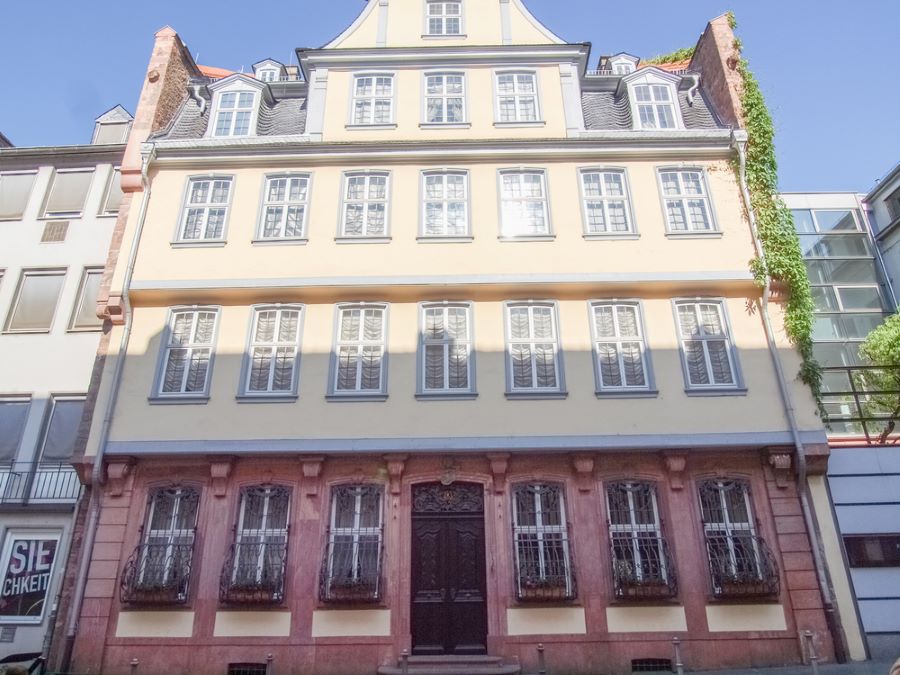
9. The Kleinmarkthalle – the culinary heart of Frankfurt
The Kleinmarkthalle is Frankfurt’s best-known market hall and a paradise for gourmets. Under the imposing roof, you will find over 150 stalls selling fresh food, regional specialties and international delicacies. A visit to the Kleinmarkthalle is a feast for the senses.
What is there to discover in the Kleinmarkthalle?
- Fresh fruit and vegetables from regional producers
- Frankfurt specialties such as green sauce and Handkäs with music
- International delicacies from sushi to bratwurst
Tip for visiting the Kleinmarkthalle
Come hungry, because the temptations at the stalls are great. Taste your way through the wide range of products on offer and get advice from the traders. A visit to the Kleinmarkthalle is an unforgettable culinary experience.
10. The Iron Footbridge – Frankfurt’s most famous pedestrian bridge
The Iron Footbridge is a pedestrian bridge over the River Main and connects Frankfurt city center with the Sachsenhausen district. The filigree iron construction is a landmark of the city and offers a beautiful view of the Frankfurt skyline.
What is there to see on the Iron Footbridge?
- An impressive view of the Frankfurt skyline
- The Museumsufer with its numerous museums
- The Main with its excursion boats and cargo ships
History of the Iron Footbridge
The Iron Footbridge was opened in 1869 and was the first fixed bridge over the Main in Frankfurt. It was destroyed during the Second World War and rebuilt in 1946. Today, the Iron Footbridge is a popular meeting place and photo motif.
Conclusion – The top 10 sights in Frankfurt am Main
- Römerberg – the historic heart of Frankfurt with impressive half-timbered houses
- St. Paul’s Church – symbol of democracy and cradle of the German National Assembly
- The Main Tower – Frankfurt’s highest vantage point with a spectacular view over the skyline
- The Museumsufer – Unique ensemble of 15 museums along the Main River
- The Palm Garden – a green oasis with over 6,000 plant species from all over the world
- St. Bartholomew’s Cathedral – Coronation church of the Holy Roman Emperors
- The Alte Oper – important concert and event venue in the neo-renaissance style
- The Goethe House – birthplace of the famous poet Johann Wolfgang von Goethe
- Kleinmarkthalle – the culinary heart of Frankfurt with regional and international specialties
- The Eiserne Steg – Frankfurt’s most famous pedestrian bridge with a beautiful view of the skyline
Frankfurt am Main is a city full of contrasts that combines history and modernity in a fascinating way. From historical sights such as the Römer and St. Paul’s Church to modern attractions such as the Main Tower and the Museumsufer – there is something for everyone to discover in Frankfurt. Be inspired by the diversity and charm of this unique city and immerse yourself in the fascinating world of the Main metropolis.
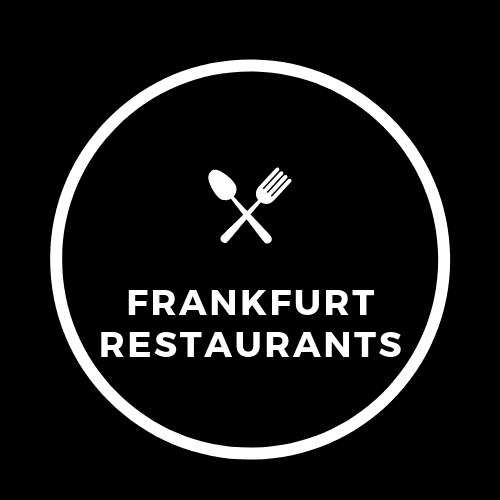


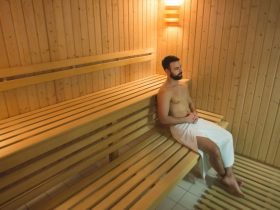
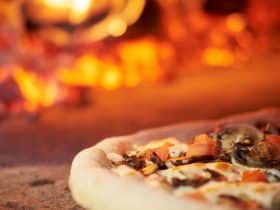
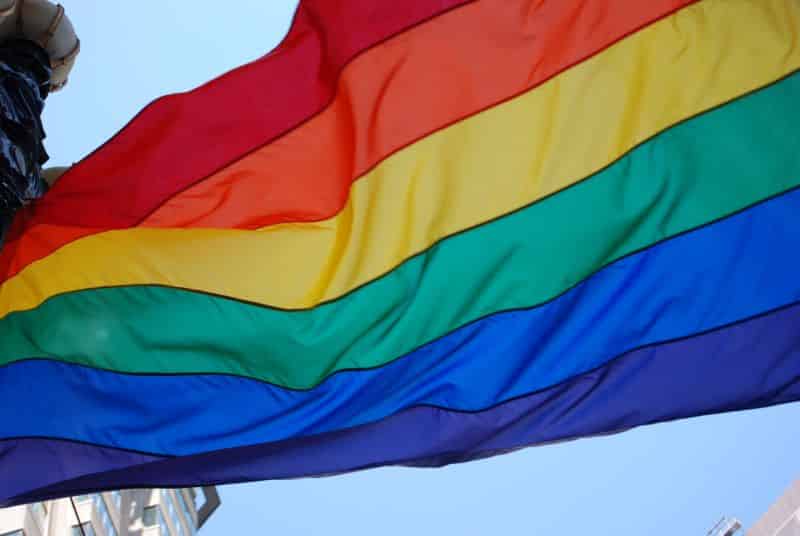
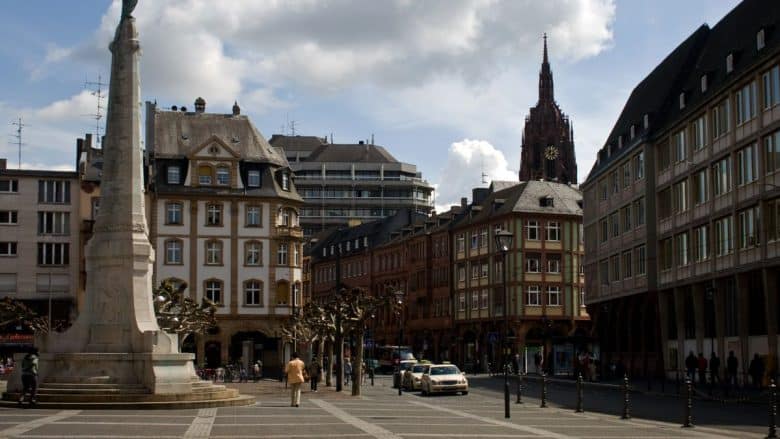

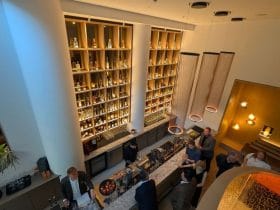
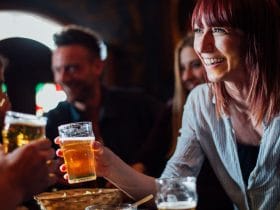
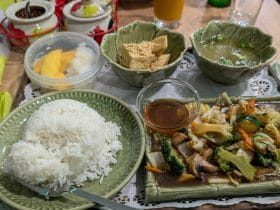
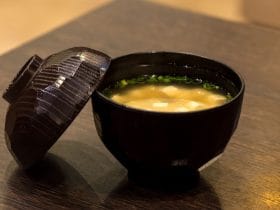
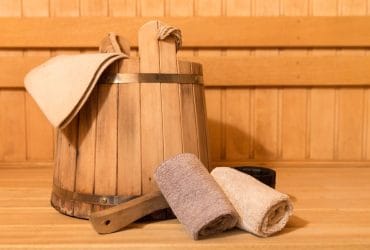
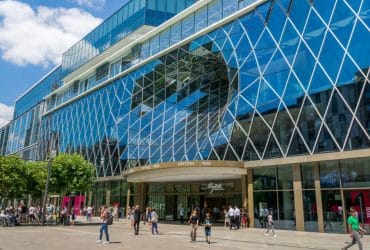

Leave a Review